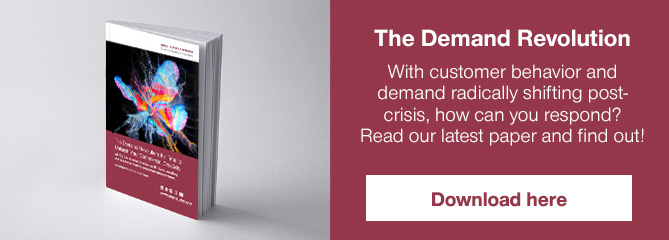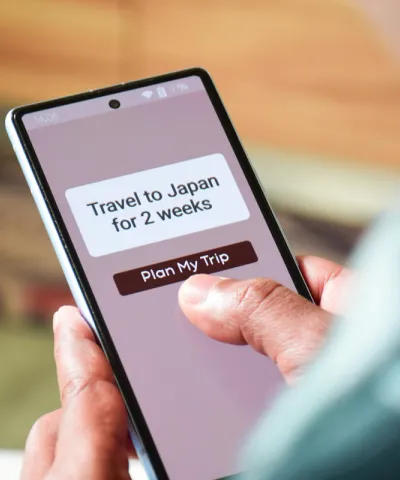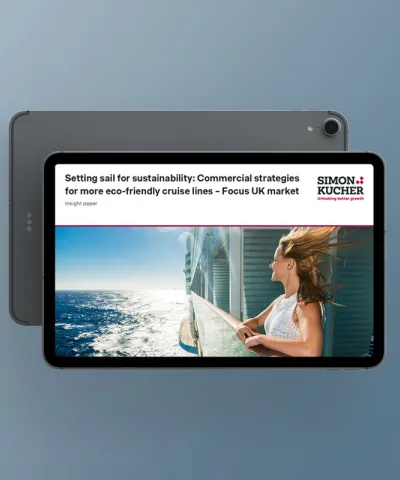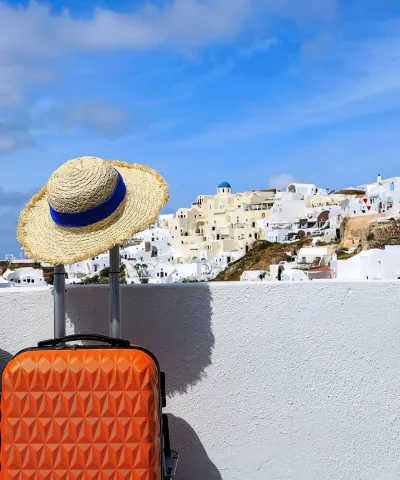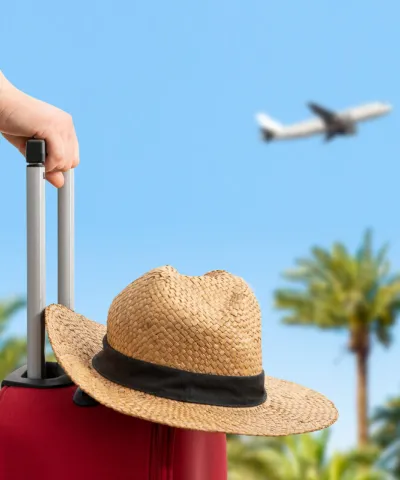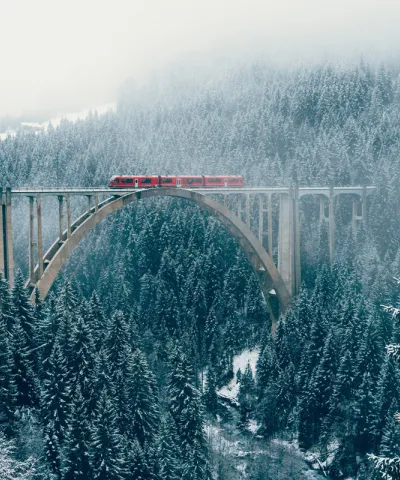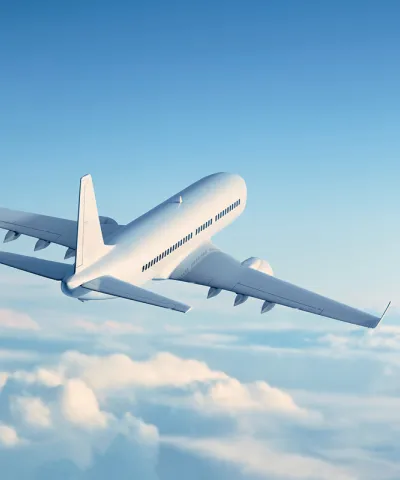Welcome to the faster future, where your monetization machine needs to run at a 100x higher speed. But are travel, tourism, and leisure companies bold enough to put their commercial creativity to the test? We caught up with Dimitris Hiotis, Alexander Frank, and Miguel Afán de Ribera to find out.
Dimitris, your Travel Trends 2021 Study indicated considerable pent-up “travel revenge” demand for this year. As we make our way through 2021, do you see this travel revenge playing out as you expected?
Dimitris: Since the previous survey, some countries have up to 50 percent of their populations vaccinated. Last year we saw staycations being a key trend for holidays, which will continue this year, but there's also going to be more international, last-minute action. For example, once the UK government gave the green light, over 5000 Brits per day immediately descended on Portugal. It will be interesting to see the results of the upcoming Trends 2022 survey. My expectation is that people are ready and waiting to travel, and once they are given the green light to do so, they will travel again.
Would you say that the travel and tourism industry is structurally prepared to accommodate the spike?
Dimitris: We already know this phenomenon from the leisure sector, e.g. amusement parks. The customers that book in advance are very few compared to the ones that arrive and pay on the day. The ability to predict is low and there are limitations on what can be done with pricing. If you put hotels and airlines under this kind of pressure, they end up with a black box and their monetization potential sinks dramatically, as they rely on pre-advance booking; so in summary, the traditional travel players are not fully ready to adapt to the surge.
Alexander: What's the solution for that? The way companies forecast demand needs to change. If you no longer have customers on the books, you need to look at other things outside of your own data universe. You need to go beyond your internal data, earlier in the process.
Miguel: There are other good indicators of where the money will come in. For example, is there any correlation between web searches for your hotel and the actual business? And once you have this indication of what’s coming, what action do you take? Is that going to have an impact on pricing? On promotions? Do you provide incentives for advance purchases instead of “punishments” for last-minute bookings? You’ve got to be prepared to get that right and use external data as indicators of your eventual demand.
There is a lot of discussion about how COVID-19 has impacted demand in the industry. How would you differentiate between companies that have just found contingency plans for the pandemic and those that show real signs of commercial creativity with future-proof solutions?
Alexander: It depends on how commercially creativity is applied – and that might vary by sector. Let’s take airlines as an example, where the demand revolution has forced them to adapt their cancellation and rebooking processes. Traditionally, customers couldn’t just change flights at last minute. Now airlines are allowing this – is it just a contingency plan? Yes, but also no. When I talk to airlines, they say this is a small change in the commercial strategy due to COVID-19, but it is a change that will impact so many things going forward. This is already a commercially creative step for them.
Dimitris: Commercial creativity can also mean redefining your focus and finding new client segments. In hotels, commercially creative models could be renting rooms by the hour as workspaces and changing prices depending on the time of the day. For example, the Dutch hotel brand Citizen M launched a subscription service targeted at remote workers. Traditionally, the industry may have been reluctant to introduce such a model, as it ran the risk of compromising revenues from individual overnight stays. The crisis has changed that risk relationship and spurred creative innovation in its place.
Miguel: There's also a segment of customers who will feel more secure with more space. So personal space is going to become a way to monetize. To maintain the same profitability per square meter, you either need to sell at a higher price, or you need to significantly boost cross-selling. Your monetization machine needs to go 100 times faster.
Alexander: In the restaurant sector we’ve seen a lot of transformation and innovation in terms of revenue model. Wagamamas in the UK is really pushing ahead with its “dark kitchen” concept, identifying spots with a higher propensity for delivery and addressing the market with delivery-only sites. Imagine what this means for business expansion. It involves completely new risks and capabilities. You will likely need more mass delivery specialists and less people serving customers in the store. You also need to understand how to concentrate your kitchens to capture the largest addressable market possible, and what channels are required to fully tap into the potential.
Miguel: Retail is also a totally new revenue model. Some time ago, we saw supermarkets starting to sell pre-prepared “takeaways” for customers to eat directly at home. Then restaurants embraced out-of-store consumption and entered the retail space, selling their products in supermarkets. This has been accelerated massively by COVID-19. Imagine if a chain like McDonalds started selling their products in the supermarket? It might seem farfetched, but in Spain we have already witnessed this with the popular hamburger chain, Goiko. They recently introduced their premium hamburgers in supermarkets: first meat, then bread, and finally sauces to replicate the Goiko hamburger experience. Another example is the sushi chain Grupo Sushita, which even before the pandemic, had a commercially creative innovation focus.
In his recent article, Conrad Heider discussed how startups may find it easier to be commercially creative than more traditional companies, highlighting Airbnb as an example. Would you say that most companies in the travel, tourism, and leisure industry have commercial creativity in their DNA?
Dimitris: As Conrad describes, commercially creative companies build things with a much more agile and adaptive technology, and so they can adapt fast. In the travel, tourism, and leisure industry, we have identified numerous commercially creative solutions. But in many cases, implementing them is a different story. We have worked with startups who roll out our recommendations from one day to the next. We have also worked with legacy companies that need several months to filter our solutions through their organization and then call us back for a follow-on project to support with implementation. In both examples, the companies and their customers want change. But the commercially creative companies are ready to jump into testing, learning, evolving, and adapting – the fear of failure is the biggest barrier to innovation and implementation.
Alexander: Many companies have the technology available. But in sectors like hotels and airlines, they need to change so many things to make the switch. They have always relied heavily on machines to make predictions. Making such dramatic changes might mean renewing their whole capabilities and processes. It implies a huge transformation. For example, the airline industry has been trying to get away from using algorithms, moving to the next level of revenue management with continuous prices. The challenge is how to change. They have to rip out legacy systems and don’t know what the knock-on effects of that might be.
Miguel: In the restaurant and hotel sector, digitalization has had to advance at a rapid pace in order to reduce face-face-face interaction with customers. Delivery platforms were already digitally more advanced compared to restaurant chains in terms of things like customized orders, etc. Now we have seen a massive boost in ordering apps for restaurants, too. The question is how to take digital to the next level. This could be with personalized menus based on a customer’s profile, reflecting specific preferences, dietary requirements, and even willingness to pay. It could be on the reservation side, e.g. paying a premium to reserve a table for a specific event or time of day.
So how might a travel, tourism, and leisure company start a commercial creativity project with Simon-Kucher?
Dimitris: Our first step is to help companies identify where the potential lies for them. It could lie in dark kitchens, new booking systems, or dynamic pricing, to name a few. It’s about understanding the room for expansion and all of the possible evolutions that this could involve. Identifying the commercial creativity potential should be the bread and butter for any travel, tourism, and leisure company in the coming months. If you marry this potential with the areas where it is easier to implement, then you start having a good view of what can be done immediately versus a more long-term game.
Where does your potential lie? Reach out to Dimitris Hiotis, or Miguel Afán de Ribera today to find out!

